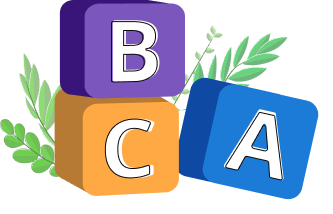

(妊娠(にんしん))
受胎(じゅたい)
the act of becoming pregnant; fertilization of an ovum by a spermatozoon

(受精する)
受精させる
to introduce male reproductive cells into the female reproductive system for reproduction
文法情報:

N/A
of an organism prior to birth or hatching

(インプラントする)
着床する
(of a fertilized egg) to attach itself to the wall of the uterus after conception
文法情報:

(胎内(たいない))
子宮(しきゅう)
the part of the body of a woman or female mammal where the baby develops before birth
The womb, also known as the uterus, is a muscular organ located in the female pelvis where a fertilized egg implants and develops into a fetus during pregnancy. It has a lining called the endometrium that thickens and sheds in each menstrual cycle if pregnancy does not occur. The womb is designed to support the growth of a developing fetus, with its muscular walls capable of contracting during labor to facilitate childbirth.

(ウテラス)
子宮 (しきゅう)
(anatomy) the organ in the female body where the fetus is conceived and grown before being born
The uterus, also known as the womb, is a hollow, muscular organ located in the female pelvis. It serves as the site for the development and nourishment of a fertilized egg during pregnancy. The uterus consists of three layers: the innermost lining called the endometrium, which thickens and sheds during the menstrual cycle; the muscular middle layer known as the myometrium, responsible for contracting during labor and childbirth; and the outer layer called the perimetrium. The uterus is capable of expanding to accommodate a growing fetus and contracts to facilitate the delivery of the baby during childbirth.


(受胎する)
妊娠する
to become pregnant
文法情報:

(排卵誘発剤)
不妊治療薬
a medication designed to enhance fertility by addressing hormonal imbalances or stimulating the ovaries to improve the chances of conception
A fertility drug is a medication prescribed to help treat infertility in both men and women. These drugs work by stimulating or controlling the reproductive hormones responsible for ovulation in women or sperm production in men. They are often used in medical procedures such as in vitro fertilization (IVF) or intrauterine insemination (IUI).


(胚(はい))
胎児(たいじ)
an offspring of a human or animal that is not born yet, particularly a human aged more than eight weeks after conception

(プラセンタ)
胎盤 (たいばん)
an organ that forms during pregnancy, connecting the developing fetus to the uterus, providing essential nutrients and oxygen
The placenta is a vital organ that develops during pregnancy, connecting the developing fetus to the uterine wall in the mother's body. It serves as a lifeline, providing nourishment, oxygen, and waste elimination for the growing fetus. The placenta also facilitates the transfer of antibodies and hormones between the mother and the fetus. It acts as a barrier, protecting the fetus from certain infections and harmful substances. The placenta plays a crucial role in maintaining a healthy pregnancy and is expelled from the body after childbirth. Understanding the functions and importance of the placenta is essential for ensuring the well-being of both the mother and the developing baby.

(陣痛(じんつう))
出産(しゅっさん)
the process of contractions and cervical dilation that leads to childbirth
Labor is the process of giving birth, where the uterus tightens and relaxes to help push the baby out. It happens in three stages: first, the cervix opens and the tightening and relaxing starts; second, the cervix continues to open and the tightening and relaxing becomes stronger; and third, the baby moves through the birth canal and is born, followed by the delivery of the placenta, which is the organ that provided nutrients and oxygen to the baby during pregnancy. The process helps guide the baby from the womb to the outside world.

N/A
to deliver a baby or offspring as a mother through the process of childbirth


(助産師 (じょさんし))
助産婦 (じょさんぷ)
a person, particularly a woman, whose occupation is helping a woman during childbirth


(孕んでいる (はらんでいる))
妊娠している (にんしんしている)
(of a woman or a female animal) carrying a baby inside one's body

N/A
a baby conceived by fertilization that occurs outside the mother's body; the woman's ova are removed and mixed with sperm in a culture medium - if fertilization occurs the blastocyte is implanted in the woman's uterus


(分娩(ぶんべん))
出産(しゅっさん)
the event of giving birth


(妊娠中である)
妊娠している
to be pregnant and awaiting the birth of a child
文法情報:


N/A
an advanced stage of life characterized by a long lifespan and great wisdom
The origin of the idiom "ripe old age" is uncertain, but it is often used to describe someone who has lived to an advanced stage of maturity or wisdom. It may have originated from the notion of a fruit being fully matured before it begins to decay. This phrase is often used positively in obituaries, eulogies, or congratulatory messages to acknowledge and appreciate someone who has reached an advanced age and is perceived to have experienced a fulfilling life. However, it is important to use this idiom with sensitivity and respect, as it can also be perceived as ageist or demeaning if used inappropriately or insensitively.


(亡(な)くなった)
故(こ)
(of a person) having recently passed away


(退職者)
年金生活者
a retired person who gets an amount of money each month, called pension, usually from the government

N/A
mentally or physically infirm with age

(ボケた(ぼけた))
年老いた(としおいた)
mentally or physically infirm with age
![to [keep|have] (all|) {one's} wits about {sb}](https://cdn.langeek.co/photo/61420/original/?type=jpeg)

N/A
to be prepared to handle things properly in case of danger or unpleasant events
The idiom "keep one's wits about someone" has a long history in the English language, dating back to Old English. It evolved from the term "wits," which referred to one's intelligence, mental faculties, and awareness. The exact historical origin is difficult to pinpoint due to its early usage in the language. Over time, it has become a common idiom used to encourage someone to stay alert and use their judgment effectively, particularly in situations requiring quick thinking and decision-making.

(痴呆)
認知症
a mental condition that happens when the brain is damaged by disease or injury, causing memory loss and impairing the ability to think or make decisions
Dementia is a mental condition characterized by a decline in mental abilities, including memory loss, difficulty with reasoning, judgment, and communication, and changes in behavior. It is typically caused by damage or disease in the brain, such as Alzheimer's disease or stroke. Dementia can significantly impact a person's ability to function independently and may affect their quality of life. Treatment for dementia focuses on managing symptoms, providing support to the individual and their caregivers, and addressing any underlying medical conditions contributing to the dementia.

N/A
a long, narrow box, typically made of wood, in which a dead body is buried or cremated

(ウェイク)
通夜(つや)
a vigil held over a corpse the night before burial

(遺書(いしょ))
遺言(いごん)
a legal documant that a person writes to decide what happenes to their belongings after their death

N/A
the passionate and demonstrative activity of expressing grief

N/A
the incineration of a dead body


(ばら撒く (ばらまく))
散らす (ちらす)
to make things like items, people, particles, etc. spread out from a center and move in different directions
文法情報:


(失う(うしなう))
奪う(うばう)
to deprive someone of a loved one through death
文法情報:

(火葬施設)
火葬場
a building for burning the dead bodies of people, often as a funeral ceremony


(葬儀(そうぎ))
埋葬(まいそう)
the act of burying a dead body or the ceremony in which a dead body is buried

(弔意 (ちょうい))
お悔やみ (おくやみ)
an expression of compassion toward an individual who has lost someone in their life recently

(損失 (そんしつ))
喪失 (そうしつ)
the experience of losing a loved one


(死去する(しきょする))
亡くなる(なくなる)
to no longer be alive
文法情報:


(逝去する)
亡くなる
to no longer be alive
文法情報:

N/A
used to describe someone who is about to die
The idiom "at death's door" is a figurative expression originating from the idea that someone who is severely ill or injured is so close to death that they are metaphorically standing at the threshold or door of the afterlife. It is used to describe individuals who are in an extremely critical or life-threatening condition, often suggesting that their chances of recovery are minimal.


N/A
in a very poor condition or near the end of their lifespan or usefulness
The idiom "on one's last legs" is believed to have originated in the 17th century and was used to describe animals that were near death and could barely stand up. The phrase now means to be in a very weak or poor state, often due to age or illness. The phrase is often used to describe people or things that are nearing the end of their useful life.

(死亡 (しぼう))
致死 (ちし)
a death resulting from violence or accident


(死ぬ)
亡くなる
to lose one's life, often terribly or suddenly
文法情報:


(殺戮する)
虐殺する
to kill a large number of people, often in a harsh and heartless manner
文法情報:

(亡者(もうじゃ))
故人(こじん)
someone who is no longer alive


(譲渡する)
遺贈する
to give personal property to someone through a legal instrument, typically after one's death
文法情報:

N/A
(law) a gift of personal property by will


(遺産を受け継ぐ)
相続する
to receive money, property, etc. from someone who has passed away
文法情報:


(遺産 (いさん))
相続 (そうぞく)
what one receives upon a person's death, such as property, money, etc.

(遺言不在の)
遺言のない
dying without having left a will behind
おめでとうございます! !
49 から undefined 語を学びました。学習と語彙の復習を改善するために、練習を始めましょう!
レビュー
フラッシュカード
綴り
クイズ
